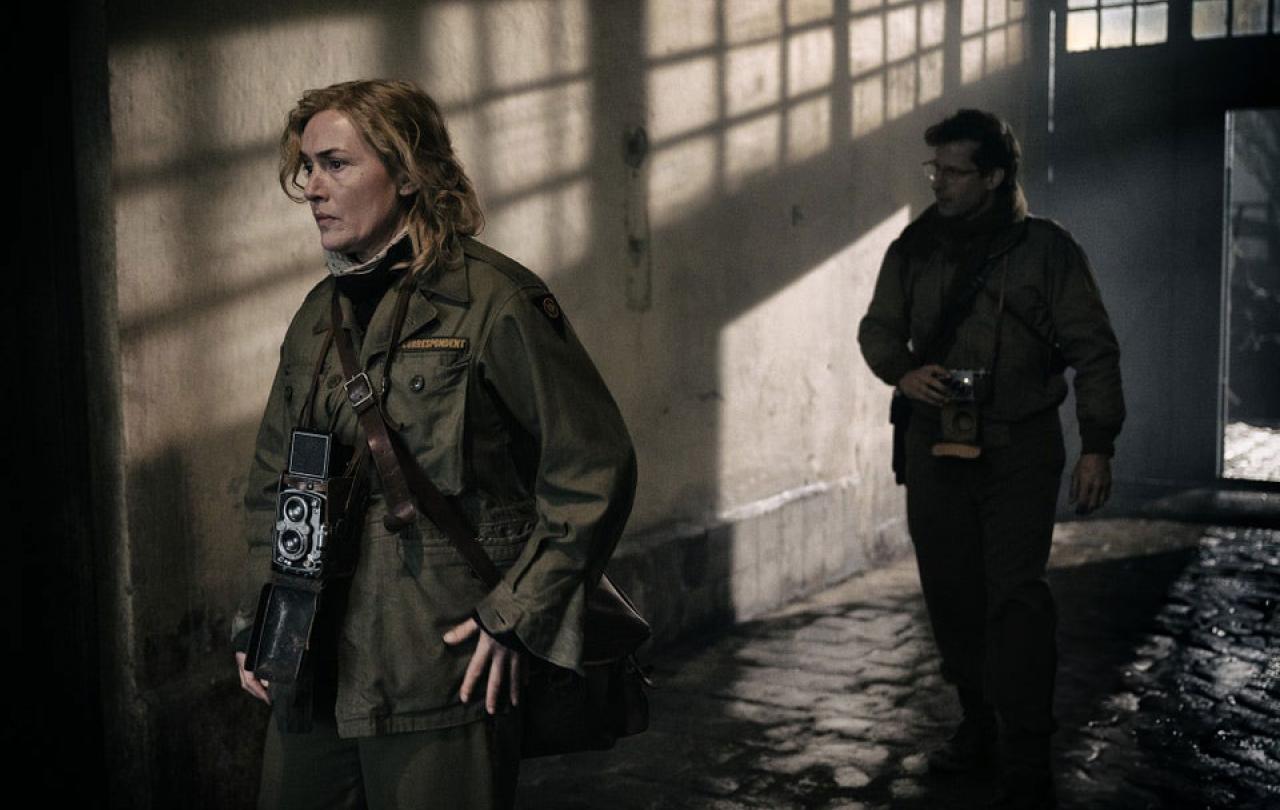
If we might indulge an absurd anachronism, I wonder what the American photojournalist Lee Miller would have done, had she been one of the women at the foot of the cross. To my mind, she would have held her nerve to record – on her German-made Rolleiflex camera held at her abdomen – not only the horror of the crucifixion of Jesus of Nazareth and the criminals beside him, but also the suffering of his mother and the other women who looked on.
I’ve had these ruminations since I watched Miller’s biopic, Lee, on its UK premiere. In passing, I should record that Kate Winslet delivers the performance of her life in the title role, because it’s in the quality of her interpretation that I’m led to consider the nature of what it means to witness, which is an act at the heart of humanity as well as central to the Christian faith.
Witnessing is what reporters, at their best, do if they are to honour their vocation. Especially war reporters. But the act of witnessing isn’t confined to journalists. The case for professional witness can be made for other jobs – police officers, aid workers, medics, lawyers all come to mind.
It’s just that this movie shows witness at its sharpest end. “Even when I wanted to look away, I knew I couldn’t,” says Lee Miller. That imperative, not to look away, is central to our human story and I would argue that this is because it’s central to my faith, which has at its centre a God who doesn’t look away.
That’s why Lee Miller made me think of the historical event of the crucifixion. The Church down the ages has been inclined to turn the cross into the Christ’s great victory – rather as reportage of the Second World War has concentrated on its conclusive victory rather than the horrors that Miller recorded.
Her magazine employer, Vogue, at first declined to publish her photos of the liberation of concentration camps Dachau and Buchenwald, in part because it detracted from the joy of that victory (though they were subsequently published in the US). If you will, Vogue looked away.
I’ve found that to go down this path with Miller, accompanied by faith, a kind of terrible road to Emmaus, delivers some unexpected reactions.
We’re called to refuse to look away from the grotesque horrors of the cross, to resist it becoming simply a jewellery symbol on a pendant, to acknowledge its centrality in man’s inhumanity to man and, ultimately, our God’s choice to share that experience. “Jesus Christ,” mutters Miller at the door of a room, possibly a gas chamber, stacked with skeletal corpses, before entering to take her photographs. Jesus Christ, indeed.
This is not to make a claim for Miller as a figure of faith. It is rather to make the claim that those of us of faith should be highly alert to where we might find the witness to it. Over the past week, I have to say I’ve found it in the work of Miller, not only in the hell of the camps, but in the shaven heads of collaborator women, the frightened children and even in that bath in Hitler’s Munich apartment.
In the last of those, there she is, naked, washing herself clean from the dirt of Dachau, which stains the bathmat from her boots in the foreground. Here is a witness to a spiritual defiance, the portrait of Hitler propped on the bath edge as she is cleansed. It’s not just that he hasn’t won, it’s that death itself hasn’t won.
I’ve found that to go down this path with Miller, accompanied by faith, a kind of terrible road to Emmaus, delivers some unexpected reactions. And they’re not the kind of reactions normally associated with faith.
The first is anger. It clearly accompanied Miller throughout her work: Anger at military discrimination against her womanhood; rage that Vogue censored her work. We could all do with being more angry at injustice, especially those of us of religious faith. Note that when American Vogue published her photos, they headlined them “Believe It!” True belief, arguably, is angry.
My second takeaway is the danger of real witness. Miller described her work as "a matter of getting out on a damn limb and sawing it off behind you". Discipleship can, maybe should, be like that.
The third is the cost of witness. Miller’s war left her with depression and what today would be called PTSD. Not looking away has its price. The cost of witness to disciples may not be as extreme as it was in the first century of its practice, but we should also be aware that it’s not a cosy lifestyle choice either.
For Miller, part of the price of her witness was alienation from her son, Antony. In the movie, though (spoiler alert), he discovers after her death how devoted to him she was. At a stretch I would say he was a son in whom she was well pleased.
That’s not to imbue her with something messianic. It is perhaps to say, with the poet Philip Larkin, that what will survive of us, especially those who have witnessed the worst of humanity and come through, is love.





